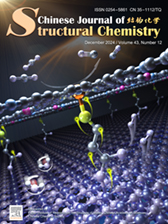
Alkyl-linked TiO2@COF heterostructure facilitating photocatalytic CO2 reduction by targeted electron transport
Jiangqi Ning, Junhan Huang, Yuhang Liu, Yanlei Chen, Qing Niu, Qingqing Lin, Yajun He, Zheyuan Liu, Yan Yu, Liuyi Li* Submit a Manuscript
Yihu Ke, Shuai Wang, Fei Jin, Guangbo Liu, Zhiliang Jin*, Noritatsu Tsubaki*
Chin. J. Struct. Chem., 2024, 43: 100458. DOI: 10.1016/j.cjsc.2024.100458
December 15, 2024
Graphdiyne; S-scheme heterojunction; Ohmic junction; NiCoMoO4; Photocatalytic hydrogen evolution
ABSTRACT
The effective separation ability of photogenerated carriers plays a crucial role in catalytic hydrogen production. Establishing a heterojunction structure is an effective means to overcome the limited carrier separation ability of some single catalysts. In this paper, Cu, graphdiyne (GDY) and NiCoMoO4 are successfully coupled to construct a composite photocatalyst NCY-15%. The addition of sheet GDY effectively prevents the aggregation of NiCoMoO4, increases the number of active sites, and enhances the light-trapping ability of the composite catalyst. The synergistic interaction of S-scheme heterojunction and Ohmic junction heterojunction between Cu, GDY and NiCoMoO4 provides a unique transfer pathway for electrons, facilitating the rapid separation of photogenerated carriers and accelerating electron transfer, while retaining electrons with strong reducing capacity to participate in hydrogen production, thereby increasing the hydrogen evolution rate. This provides a new way for the development of GDY based photocatalysts.






